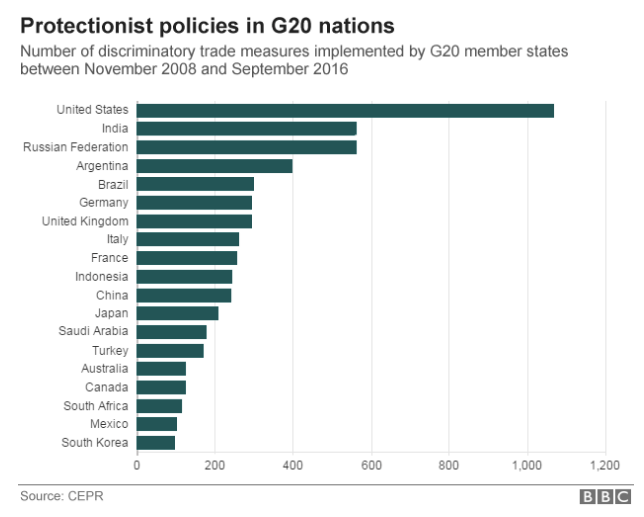Marc-William Palen
History Department, University of Exeter
Follow on Twitter @MWPalen
According to a longstanding international relations theory, the global economic order is at its most orderly when there’s at least one hegemonic free-trade champion.
As per this theory, Britain took this role upon itself in the mid-nineteenth century, ushering in a brief transatlantic flirtation with trade liberalization and relative hemispheric peace.
The United States was the first major nation to turn against this mid-nineteenth century free-trade epoch. From the Civil War to the Great Depression, the United States instead embarked upon nearly a century of Republican-style economic nationalism, which I’ve explored in my own work.
But this began to change following the Second World War when the United States assumed the mantle of free-trade hegemon. Promising prosperity, profits, and peace to the world, it sought to foster international trade liberalization through supranational initiatives like the International Monetary Fund (1944) and the General Agreement on Tariffs and Trade (1947), the latter of which morphed into the World Trade Organization in 1995.
Well, the times they are a-changing again.
Trump’s fast-developing protectionist and ultra-nationalist “America First” program has signalled that the United States is abdicating its role as free-trade leader. As the New York Times noted earlier this month:
President Trump’s advisers and allies are pushing an ambitious idea: Remake American trade. They are considering sweeping aside decades of policy and rethinking how the United States looks at trade with every country. Essentially, after years of criticizing China and much of Europe for the way they handle imports and exports, these officials want to copy them. This approach could result in higher barriers to imports that would end America’s decades-long status as the world’s most open large economy.
The Trump regime’s protectionist trade vision is fast becoming reality.
So what does this mean for the future of the global economic order?
And have we seen all of this before?


You must be logged in to post a comment.